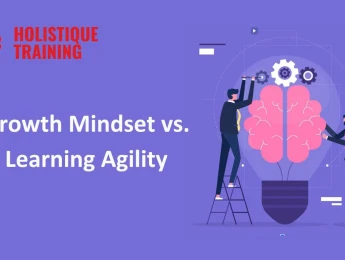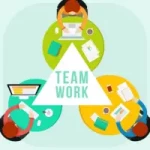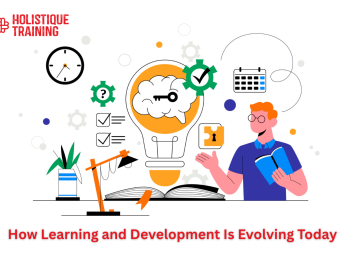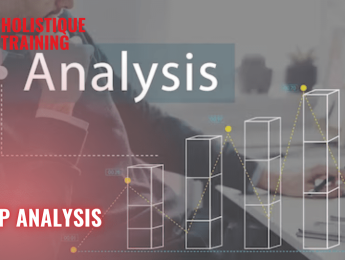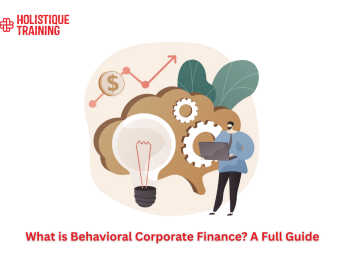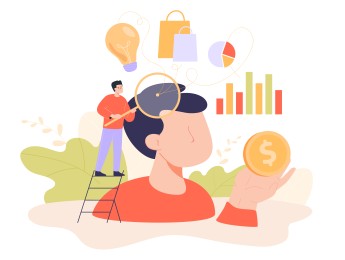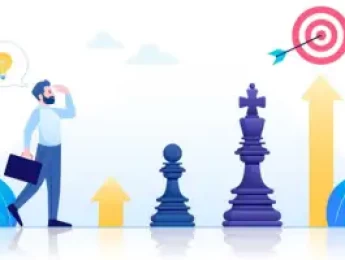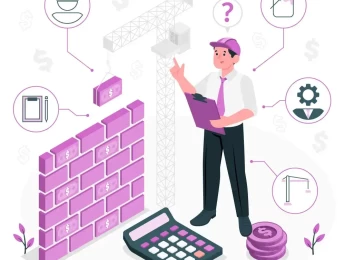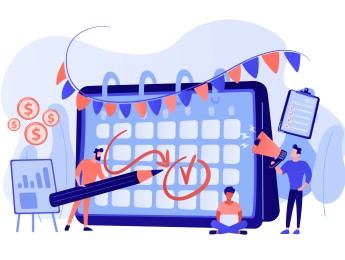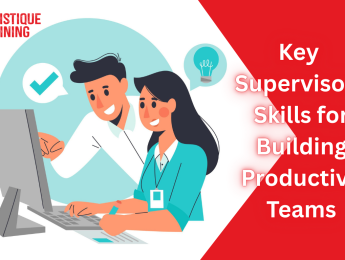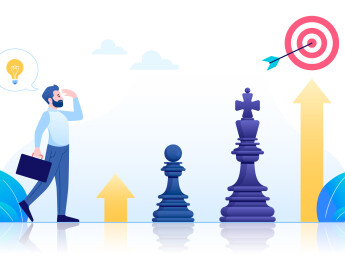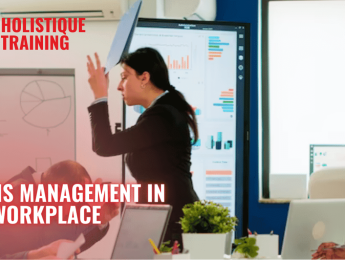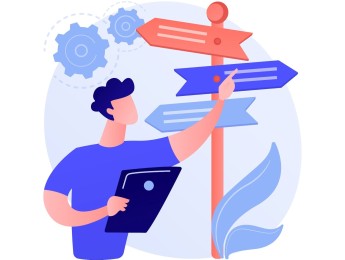- Table of Contents
- Introduction
- What is a Growth Mindset?
- The Core Principles of a Growth Mindset
- Belief in Development
- Embracing Challenges
- Persistence in the Face of Setbacks
- Effort as a Pathway to Mastery
- Learning from Criticism
- Inspiration from Others
- Why is Having a Growth Mindset Important in the Workplace?
- Enhanced Problem-Solving
- Increased Adaptability
- Improved Collaboration
- Higher Engagement and Motivation
- Resilience
- Enhanced Performance and Development
- Better Leadership and Management
- Innovation and Continuous Improvement
- How to Cultivate a Growth Mindset
- Self-Awareness
- Set Learning Goals
- Embrace Challenges
- Encourage Feedback
- Celebrate Effort
- Model a Growth Mindset
- Provide Growth Opportunities
- Adopt a Reflective Practice
- Reflective practice knowledge-sharinghelps integrate learning into your daily routines and supports continuous growth and improvement.
- What is Learning Agility?
- Curiosity:
- Experimentation:
- Reflection:
- Collaboration:
- Adaptability:
- Developing Learning Agility in Relation to Growth Mindset
- Curiosity
- Experimentation
- Reflection
- Collaboration
- How to Build an Agile Learning Culture
- Promote a Growth Mindset Across the Organisation
- Encourage Continuous Learning and Development
- Foster an Environment of Experimentation
- Facilitate Knowledge Sharing and Collaboration
- Implement Agile Learning Practices
- Recognise and Reward Learning and Adaptability
- Examples of Growth Mindset vs. Learning Agility in Action
- Growth Mindset Example:
- Learning Agility Example:
- Conclusion
Introduction
In today's rapidly evolving work environment, the ability to adapt and continuously learn has become crucial for both personal and organisational success. As industries and technologies shift, the traditional notions of fixed intelligence and static skills are being challenged. Instead, fostering a growth mindset and learning agility has emerged as essential strategies for thriving in an ever-changing landscape.
A growth mindset, which embraces the idea that abilities and intelligence can be developed through effort and persistence, lays the foundation for developing learning agility—the capacity to adapt and apply new knowledge quickly. Together, these concepts form a powerful framework for enhancing performance, driving innovation, and navigating complex challenges. This blog post explores the principles of a growth mindset, its significance in the workplace, and practical strategies for cultivating both a growth mindset and learning agility, ultimately helping organisations build a more dynamic and adaptable culture.
What is a Growth Mindset?
The concept of a growth mindset, first introduced by psychologist Carol Dweck, revolves around the belief that abilities and intelligence can be developed through dedication, hard work, and learning. This perspective contrasts with a fixed mindset, which holds that intelligence and talents are static and unchangeable.
At the heart of a growth mindset is the belief that challenges and failures are opportunities for growth rather than indications of inadequacy. Individuals with a growth mindset are more likely to embrace challenges, persist in the face of setbacks, and view effort as a path to mastery. This approach fosters resilience, a love of learning, and a drive for continuous improvement.
The Core Principles of a Growth Mindset
The concept of a growth mindset, introduced by Carol Dweck, is underpinned by several core principles that define how individuals perceive their abilities and approach challenges. Each principle contributes to fostering an environment where learning and development are prioritised and where challenges are embraced rather than avoided. Let's delve deeper into these principles to understand their significance and impact:
Belief in Development
At the heart of a growth mindset is the belief that abilities and intelligence are not fixed traits but can be developed through effort and dedication. This principle hinges on the idea that everyone has the potential to improve their skills and knowledge over time. Unlike a fixed mindset, which views talent as innate and unchangeable, a growth mindset embraces the idea that individuals can enhance their capabilities through perseverance, practice, and learning. This belief encourages continuous self-improvement and learning, fostering a culture where challenges are seen as opportunities rather than obstacles.
Embracing Challenges
Individuals with a growth mindset actively seek out and embrace challenges rather than shying away from them. They perceive challenges as valuable opportunities to learn and grow, rather than threats to their competence. This proactive approach to challenges promotes resilience and fosters a learning-oriented environment. Embracing challenges often involves stepping outside one’s comfort zone and tackling tasks that may initially seem daunting. By doing so, individuals expand their skills and gain new experiences, contributing to their overall development.
Persistence in the Face of Setbacks
A critical aspect of a growth mindset is the ability to persist in the face of setbacks and failures. Rather than viewing these setbacks as signs of inadequacy, individuals with a growth mindset see them as integral parts of the learning process. This persistence is driven by the understanding that failures are not permanent reflections of one’s abilities but rather opportunities for feedback and growth. By remaining resilient and continuing to strive towards their goals despite challenges, individuals can eventually overcome obstacles and achieve success.
Effort as a Pathway to Mastery
For those with a growth mindset, effort is seen as a crucial pathway to achieving mastery and success. This principle counters the notion that talent alone is sufficient for accomplishment. Instead, it emphasises the importance of hard work, practice, and dedication in reaching one’s goals. Individuals with a growth mindset are more likely to view effort as a necessary component of success, rather than something to be avoided. This perspective fosters a strong work ethic and encourages individuals to invest time and energy into developing their skills.
Learning from Criticism
Individuals with a growth mindset view constructive feedback and criticism positively. Instead of taking criticism personally or as a reflection of their worth, they use it as a valuable source of information for improvement. This openness to feedback allows individuals to identify areas for growth and make necessary adjustments. By embracing criticism and using it constructively, individuals can enhance their performance and accelerate their development.
Inspiration from Others
Individuals with a growth mindset are inspired by the success of others rather than feeling threatened by it. They view the achievements of others as a source of motivation and learning. This principle encourages individuals to learn from the experiences and successes of their peers, rather than comparing themselves unfavourably. By seeing others' successes as examples of what is possible, individuals with a growth mindset are more likely to be motivated to pursue their own goals and aspirations.
Each of these principles plays a vital role in cultivating a growth mindset. By understanding and applying these principles, individuals can foster an environment where learning, resilience, and continuous improvement are central to their personal and professional development.
Why is Having a Growth Mindset Important in the Workplace?
The benefits of a growth mindset extend well beyond personal development and can significantly impact organisational performance:
Enhanced Problem-Solving
Employees with a growth mindset approach problems with an open, solution-oriented mindset. They are more inclined to tackle complex issues with creativity and resilience. This approach to problem-solving is driven by the belief that challenges are opportunities to learn and grow, rather than insurmountable obstacles. Such individuals are adept at exploring multiple solutions and are willing to iterate and refine their approaches based on feedback and experience. Employees in such organisations are 65% more likely to report that their workplace encourages risk-taking, with 49% stating that this approach fosters innovation, according to Perform Yard .
Increased Adaptability
Rapid changes and unpredictability characterise the modern work environment. Employees with a growth mindset are better equipped to adapt to these changes. They view new situations and unexpected developments as opportunities to expand their skill sets and adjust their strategies. This adaptability is crucial for staying competitive and responsive in a dynamic market. Employees with a growth mindset are also more open to adopting new technologies and methodologies, which helps organisations remain agile and forward-thinking.
Improved Collaboration
Collaboration is essential for achieving collective goals and fostering a positive work environment. Employees with a growth mindset contribute to a collaborative culture by valuing diverse perspectives and encouraging open communication. They are more likely to engage in constructive feedback and work together to overcome challenges. This collaborative spirit enhances team cohesion and drives better problem-solving and innovation. By fostering a growth mindset, organisations can create a more inclusive and cooperative work environment where team members support and learn from each other. Statistics show that this will lead to 34% of employees feeling deeply committed and taking ownership of their work within their company.
Higher Engagement and Motivation
A growth mindset significantly impacts employee engagement and motivation. When employees believe that their efforts and skills can lead to growth and improvement, they are more likely to be invested in their work. This heightened engagement increases motivation to pursue new challenges and professional development opportunities. Employees with a growth mindset are also more likely to set ambitious goals and strive for continuous improvement, contributing to their overall job satisfaction and performance.
Resilience
Resilience is a key trait for navigating the ups and downs of the professional world. Employees with a growth mindset are better equipped to handle setbacks and failures. Instead of viewing these experiences as personal deficiencies, they see them as opportunities for growth and learning. This resilience enables them to recover from disappointments more quickly and maintain a positive attitude towards their work. By fostering a growth mindset, organisations can build a more resilient workforce capable of overcoming challenges and adapting to changing circumstances.
Enhanced Performance and Development
The belief that abilities can be developed through effort and learning leads to continuous personal and professional growth. Employees with a growth mindset are more likely to pursue additional training, seek feedback, and actively work on improving their skills. This commitment to self-improvement enhances their performance and contributes to their career advancement. For organisations, this translates into a more skilled and capable workforce that drives higher levels of productivity and success.
Better Leadership and Management
A LinkedIn survey found that 68% of employees favour managers with a growth mindset over those with a fixed mindset, underscoring the importance of leaders embracing a growth mindset to attract and retain top talent in their organisations.
Leaders and managers who embody a growth mindset create a supportive environment where team members feel encouraged to take risks, learn from their experiences, and develop their skills. Such leaders are more likely to provide constructive feedback, recognise and nurture potential, and foster a culture of continuous improvement. This leadership approach boosts team morale and drives overall organisational success by aligning individual growth with organisational goals.
Innovation and Continuous Improvement
Innovation is often the result of a willingness to experiment and learn from failures. Employees with a growth mindset are more likely to engage in creative thinking and experimentation, which can lead to innovative solutions and improvements. The possibility of failure does not deter them but instead, they see it as an integral part of the innovation process. This mindset fosters a culture of continuous improvement where employees are encouraged to challenge the status quo and contribute new ideas.
In summary, a growth mindset is a powerful driver of workplace success. It enhances problem-solving abilities, adaptability, collaboration, and engagement while fostering resilience and continuous development. By promoting a growth mindset, organisations can create a more dynamic, innovative, and motivated workforce better equipped to navigate challenges and achieve long-term success.
How to Cultivate a Growth Mindset
Cultivating a growth mindset requires intentional effort and practice. Here are several strategies to develop and nurture this mindset:
Self-Awareness
Self-awareness is the first step in cultivating a growth mindset. It involves recognizing and understanding your current beliefs about your abilities and intelligence. Start by reflecting on your responses to challenges, failures, and feedback. Ask yourself:
- Do you see challenges as opportunities or threats?
- How do you react to feedback and criticism?
- Do you view effort as a necessary path to success or a sign of inadequacy?
By identifying areas where you may hold a fixed mindset, you can begin to address these beliefs and shift towards a growth-oriented perspective. Keeping a journal or seeking feedback from trusted colleagues can also provide insights into your mindset and areas for improvement.
Set Learning Goals
Instead of focusing solely on performance outcomes, focus on setting learning and personal development goals. Learning goals emphasise the process and skills required to succeed rather than just the end result. For example:
- Performance Goal: “I want to achieve a sales target of $1 million this quarter.”
- Learning Goal: “I want to learn and apply new sales techniques to improve my approach and increase customer engagement.”
Setting learning goals helps reinforce the idea that growth and improvement are ongoing processes. It encourages you to develop new skills, gain knowledge, and refine your techniques.
Embrace Challenges
Actively seek out challenges and view them as opportunities for growth. Instead of avoiding tasks that seem complex or unfamiliar, tackle them head-on with a mindset of curiosity and learning. This might involve:
- Volunteering for new projects or assignments that stretch your abilities.
- Taking on roles or responsibilities outside your comfort zone.
- Engaging in activities or tasks that require learning new skills or knowledge.
Embracing challenges helps build resilience and reinforces the belief that effort and persistence lead to growth. It also provides valuable learning experiences that contribute to your overall development.
Encourage Feedback
Actively seek and encourage feedback from others, and approach it with an open and constructive mindset. Feedback provides valuable insights into your strengths and areas for improvement. Here’s how to make the most of feedback:
- Request Feedback: Ask for specific, actionable feedback from colleagues, mentors, or supervisors.
- Listen Actively: Pay close attention to the feedback without becoming defensive or dismissive.
- Reflect and Act: Consider how the feedback can be applied to improve your performance and development. Make a plan to address any areas for growth.
Embracing feedback as a tool for improvement rather than a judgement of your abilities helps reinforce a growth mindset and supports continuous learning.
Celebrate Effort
Recognise and celebrate the effort and process of achieving goals, not just the final outcomes. This shift in focus helps reinforce the value of persistence and hard work. For example:
- Acknowledge your own efforts and progress, even if the end result is not as expected.
- Celebrate team members who demonstrate perseverance and a commitment to learning, regardless of the outcome.
Celebrating effort helps build a culture that values growth and development, encouraging everyone to maintain a positive attitude towards challenges and learning opportunities.
Model a Growth Mindset
Lead by example and model a growth mindset in your actions and interactions. Demonstrate how you approach challenges, respond to feedback, and persist through difficulties. This can influence and inspire others to adopt similar attitudes. To model a growth mindset:
- Share your experiences of overcoming challenges and learning from setbacks.
- Provide constructive feedback and support to others, encouraging their growth and development.
- Show enthusiasm for learning and self-improvement, and encourage others to pursue their own growth opportunities.
By modelling a growth mindset, you create an environment where others feel empowered to embrace challenges and continuously develop their skills.
Provide Growth Opportunities
Create or seek out opportunities that foster learning and development. Engage in activities that challenge your skills and expand your knowledge base. This might include:
- Attending workshops, seminars, or training sessions relevant to your field.
- Participating in professional development programs or certifications.
- Engaging in cross-functional projects or collaborative teams to gain new perspectives.
Providing and taking advantage of growth opportunities reinforces the belief that learning and development are ongoing processes.
Adopt a Reflective Practice
Regularly reflect on your experiences, challenges, and successes. Reflection helps you understand what worked and what didn’t and how to apply these insights moving forward. To practise reflection:
- Set aside time for regular self-reflection, either through journaling or meditation.
- Analyse your experiences and identify key lessons learned.
- Use reflections to inform your future goals and actions.
Reflective practice knowledge-sharinghelps integrate learning into your daily routines and supports continuous growth and improvement.
Cultivating a growth mindset is an ongoing journey that requires conscious effort and practice. By focusing on self-awareness, setting learning goals, embracing challenges, seeking feedback, celebrating effort, modelling a growth mindset, providing growth opportunities, and adopting reflective practices, you can develop and maintain a growth mindset that enhances both personal and professional success.
Measurement Area | Key Indicators |
Employee engagement | High participation in learning opportunities |
Innovation | Increase in new ideas and project initiatives |
Adaptability | Quick adjustment to change and challenges |
Collaboration | Active knowledge sharing and team problem-solving |
Employee satisfaction | Positive feedback on growth and development |
Table: Measuring the effectiveness of a growth mindset culture
What is Learning Agility?
Learning agility refers to the ability to rapidly learn, adapt, and apply new knowledge and skills in a variety of situations. It encompasses several key components:
Curiosity:
A strong desire to learn and explore new ideas and experiences. Curiosity drives individuals to seek out new knowledge and understand different perspectives.
Experimentation:
Willingness to try new approaches and experiment with different solutions. This involves taking risks and learning from the outcomes, whether successful or not.
Reflection:
The ability to critically assess experiences and learn from them. Reflection helps individuals understand what worked, what didn’t, and how to apply these lessons in the future.
Collaboration:
Working effectively with others to achieve shared goals. Learning agility involves leveraging a team's collective knowledge and skills.
Adaptability:
Adaptability is the ability to adjust to new conditions and challenges quickly. It ensures that individuals can thrive in changing environments.
Developing Learning Agility in Relation to Growth Mindset
A growth mindset and learning agility are deeply interconnected. Cultivating a growth mindset creates a strong foundation for developing learning agility. Here’s how these concepts complement each other:
Learning agility, the ability to rapidly learn and adapt from experiences is closely intertwined with a growth mindset. A growth mindset lays the groundwork for learning agility by fostering attitudes and behaviours that enable individuals to navigate new situations effectively and continuously evolve. Here’s a detailed exploration of how learning agility is developed on the foundation of a growth mindset, with a focus on key aspects like curiosity, experimentation, reflection, and collaboration:
Curiosity
Curiosity is a driving force behind learning agility. When individuals embrace a growth mindset, they naturally cultivate a sense of curiosity about the world around them. This curiosity fuels the desire to explore new ideas, seek out new experiences, and understand different perspectives. Here’s how curiosity contributes to learning agility:
- Exploring New Areas: Curiosity leads individuals to venture beyond their comfort zones and explore new domains of knowledge and skills. This exploration enhances their adaptability and ability to handle diverse challenges.
- Asking Questions: A curious mindset encourages individuals to ask questions, seek clarification, and engage in deeper inquiry. This proactive approach helps them gain a more comprehensive understanding of complex situations.
- Continuous Learning: Curiosity drives a commitment to lifelong learning. Individuals with a growth mindset are more likely to stay engaged in ongoing education and development opportunities, which supports their learning agility.
Experimentation
Experimentation involves trying out new approaches, testing hypotheses, and learning from the outcomes. With a growth mindset, individuals view experimentation as a valuable part of learning rather than a risk of failure. Here’s how experimentation enhances learning agility:
- Trial and Error: A growth mindset encourages individuals to experiment with different methods and solutions, accepting that not all attempts will succeed. This iterative process helps them refine their strategies and adapt their approaches based on their learning.
- Innovation: Experimentation often leads to innovation as individuals test new ideas and approaches. This willingness to experiment fosters creativity and problem-solving skills, which are essential for navigating complex or unfamiliar situations.
- Learning from Failure: When experiments do not yield the desired results, individuals with a growth mindset view these outcomes as opportunities for learning and growth. They analyse what went wrong, adjust their approach, and apply these insights to future experiments.
Reflection
Reflection is a critical component of learning agility. It involves evaluating experiences, analysing successes and failures, and deriving lessons to inform future actions. A growth mindset supports reflective practices in the following ways:
- Self-Assessment: Individuals with a growth mindset regularly assess their own performance and development. Reflecting on their experiences helps them identify strengths, areas for improvement, and strategies for continued growth.
- Insight Generation: Reflection helps individuals generate insights from their experiences. By analysing what worked and what didn’t, they can adapt their strategies and approaches to better handle similar situations in the future.
- Feedback Integration: Reflective practices include integrating feedback from others. Individuals with a growth mindset use feedback to inform their self-reflection, ensuring that their learning process is both comprehensive and responsive to external input.
Collaboration
Collaboration enhances learning agility by exposing individuals to diverse perspectives and approaches. A growth mindset fosters a collaborative environment where team members are open to sharing knowledge and learning from one another. Here’s how collaboration supports learning agility:
- Knowledge Sharing: Collaborative environments encourage the exchange of ideas and expertise. Individuals with a growth mindset actively contribute to and seek out collaborative opportunities, enhancing their learning through shared experiences.
- Diverse Perspectives: Working with others provides access to different viewpoints and problem-solving approaches. This exposure broadens individuals’ understanding and helps them adapt to various situations more effectively.
- Collective Problem-Solving: Collaboration often involves tackling complex problems together. A growth mindset supports this collective approach by valuing diverse contributions and working towards common goals.
By building on the foundation of a growth mindset, individuals can develop and strengthen their learning agility. Curiosity drives exploration and continuous learning, experimentation fosters innovation and resilience, reflection provides insights for improvement, and collaboration enhances collective problem-solving and knowledge sharing. These elements create a dynamic and adaptable approach to learning and development, equipping individuals to thrive in ever-changing environments.
How to Build an Agile Learning Culture
Creating an agile learning culture requires a strategic approach that integrates growth mindset principles into the fabric of organisational practices and values. An agile learning culture fosters continuous improvement, adaptability, and innovation. Here’s an elaboration on how to build such a culture:
Promote a Growth Mindset Across the Organisation
Embedding a growth mindset throughout the organisation involves integrating it into every aspect of the work environment. Leaders should model growth mindset behaviours, such as embracing challenges and learning from failures, to set an example for their teams. Regularly communicating the value of learning and improvement and recognizing and rewarding employees with a growth mindset helps reinforce these values. This cultural shift encourages all employees to view their roles as opportunities for growth and development, fostering a more resilient and innovative organisation.
Encourage Continuous Learning and Development
Organisations should prioritise ongoing learning and professional development to build an agile learning culture. This involves providing employees with access to diverse learning opportunities, such as training programs, workshops, and online courses. Encouraging employees to set personal and professional development goals and supporting their pursuit of these goals with resources and time demonstrates a commitment to their growth. An environment that values and invests in continuous learning helps employees stay current with industry trends, adapt to new challenges, and develop the skills necessary for evolving roles.
Foster an Environment of Experimentation
An environment that encourages experimentation allows employees to explore new ideas and approaches without fearing failure. Organisations should create safe spaces where employees feel comfortable trying out new methods and technologies. Regardless of the outcome, recognizing and celebrating innovative attempts reinforces the idea that experimentation is a valuable part of the learning process. This supportive environment stimulates creativity and enables employees to learn from their experiences, leading to continuous improvement and agility in addressing complex problems.
Facilitate Knowledge Sharing and Collaboration
Promoting knowledge sharing and collaboration is crucial for building an agile learning culture. Organisations should implement systems and practices that enable employees to share insights, expertise, and best practices across teams and departments. Regular team meetings, cross-functional projects, and collaborative tools can facilitate this knowledge exchange. By encouraging teamwork and sharing diverse perspectives, organisations harness collective intelligence and foster a culture of mutual support and continuous learning.
Implement Agile Learning Practices
Integrating agile learning practices into organisational processes enhances the ability to adapt and respond to changing needs. This involves adopting iterative approaches to learning and development, where employees regularly assess their progress and adjust their strategies based on feedback and results. Agile learning practices encourage short learning cycles, frequent reviews, and continuous adjustments. By embedding these practices into daily workflows, organisations ensure that learning is a dynamic and integral part of their operations, leading to more effective and adaptive responses to challenges.
Recognise and Reward Learning and Adaptability
Recognition and rewards play a significant role in reinforcing an agile learning culture. Organisations should acknowledge and celebrate employees committed to learning, adaptability, and innovation. This can be done through formal recognition programs, performance reviews, or informal praise. By highlighting and rewarding these behaviours, organisations motivate others to embrace a similar mindset and reinforce the value of continuous improvement and agility in the workplace.
Building an agile learning culture involves embedding growth mindset principles into organisational practices, promoting continuous learning, encouraging experimentation, facilitating collaboration, implementing agile learning practices, and recognizing achievements. By focusing on these areas, organisations can create an environment where learning and adaptability are central to their success, enabling them to thrive in a rapidly evolving landscape.
Examples of Growth Mindset vs. Learning Agility in Action
Understanding these concepts through real-world examples can help illustrate their practical applications:
Growth Mindset Example:
Consider an employee tasked with leading a new project outside their area of expertise. Rather than feeling daunted, they view this as a chance to expand their skills and knowledge. They actively seek feedback, embrace challenges, and continuously work to improve their performance. This proactive approach helps them succeed in the project and fosters a culture of growth and learning within their team.
Learning Agility Example:
A tech company manager implements a new software system. They quickly learn the system’s features and limitations, experiment with different ways to integrate it into their workflow and collaborate with colleagues to troubleshoot issues. Their ability to adapt to the new system and share their knowledge with others exemplifies learning agility. Their efforts lead to a smoother implementation process and enhance the team's overall effectiveness.
Conclusion
The interplay between a growth mindset and learning agility is crucial for navigating and excelling in today’s dynamic work environment. A growth mindset lays the groundwork for developing learning agility by fostering curiosity, resilience, and a willingness to embrace challenges. This mindset helps individuals see failures as opportunities for growth and encourages a continuous pursuit of knowledge. Meanwhile, learning agility builds upon this foundation by enhancing the ability to rapidly acquire and apply new knowledge and skills, allowing individuals to adapt quickly to changing circumstances and seize new opportunities.
By understanding and cultivating both a growth mindset and learning agility, individuals and organisations can better adapt to change, drive innovation, and achieve sustained success. Embracing these attributes contributes to personal development and fosters a culture of continuous improvement and adaptability, which is essential for thriving in the modern workplace. For those looking to deepen their understanding of these concepts and implement them effectively, our course, Strategic Agility and Thinking, offers valuable insights and practical strategies to enhance your strategic capabilities and foster a culture of agile thinking. Embrace this opportunity to elevate your skills and drive meaningful organisational change.


